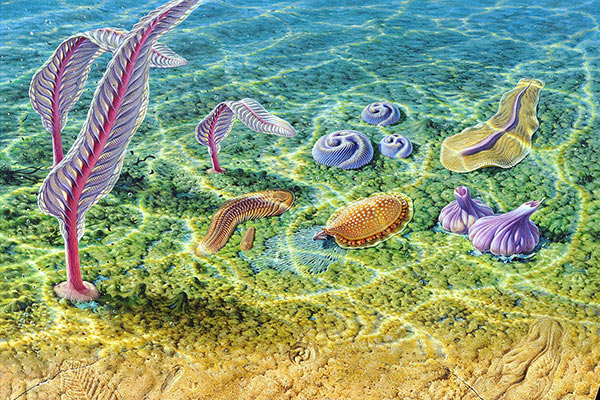For complex organisms, the average lifespan of a species is only about four million years—roughly about where we are now.
對于復雜動物來說,一個物種的平均壽命只有大約400萬年——大致相當于我們人類迄今存在的時間。
Extinction is always bad news for the victims, of course, but it appears to be a good thing for a dynamic planet. "The alternative to extinction is stagnation," says Ian Tattersall of the American Museum of Natural History, "and stagnation is seldom a good thing in any realm." (I should perhaps note that we are speaking here of extinction as a natural, long-term process. Extinction brought about by human carelessness is another matter altogether.)
當然,滅絕對于受害者來說總是壞消息,但對于一顆有活力的行星來說似乎是一件好事情。“與滅絕相對的是停滯,”美國自然史博物館的伊恩·塔特薩爾說,“停滯在任何領域都很少是一件好事情。”(我也許應當指出,我們在這里談論滅絕,指的是一個漫長的自然過程。由于人類的粗心大意而造成的滅絕完全是另一回事。)

Crises in Earth's history are invariably associated with dramatic leaps afterward. The fall of the Ediacaran fauna was followed by the creative outburst of the Cambrian period. The Ordovician extinction of 440 million years ago cleared the oceans of a lot of immobile filter feeders and, somehow, created conditions that favored darting fish and giant aquatic reptiles. These in turn were in an ideal position to send colonists onto dry land when another blowout in the late Devonian period gave life another sound shaking. And so it has gone at scattered intervals through history. If most of these events hadn't happened just as they did, just when they did, we almost certainly wouldn't be here now.
地球史上的危機總是與隨后的大躍進有關系。埃迪亞卡拉動物群的沒落之后是寒武紀的創造性爆發。44000萬年以前的奧陶紀滅絕為大海清除了大量一動不動而靠過濾來進食的動物,為快速游動的魚類和大型水生爬行動物創造了有利條件。那些動物轉而又處于理想地位;當泥盆紀末期又一次災難給生命又一次沉重打擊的時候,它們能把殖民者派上了陸地。在整個歷史上,不時發生這樣的事。要是這些事件不是恰好以它們發生的方式發生,不是恰好在它們發生的時間發生,現在我們幾乎肯定不會在這里。
來源:可可英語 http://www.ccdyzl.cn/Article/201812/573233.shtml











